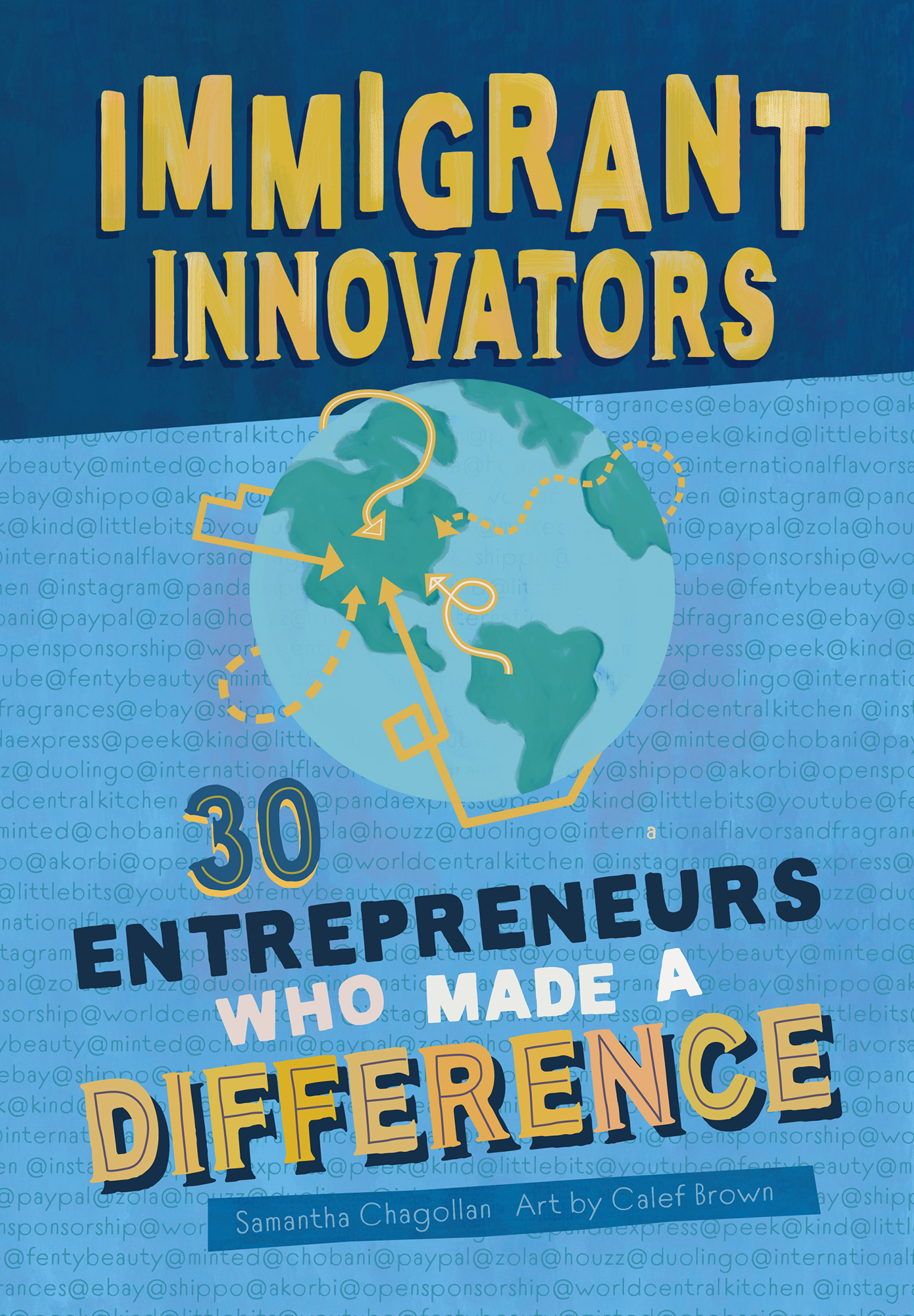
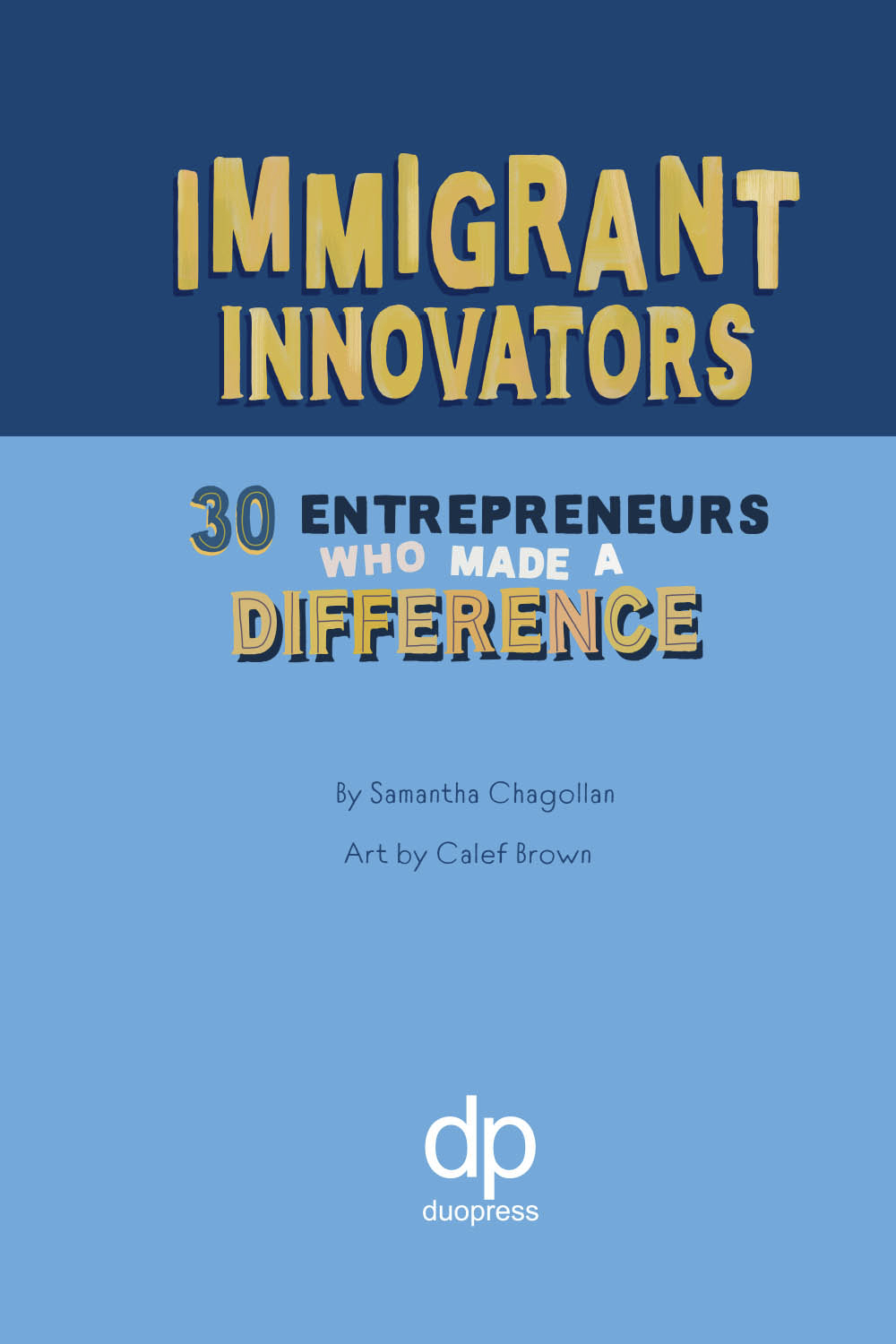
Contents Immigrant Entrepreneurs: By the Numbers Steve Chen and Jawed Karim Rihanna Marcus Samuelsson Mariam Naficy Hamdi Ulukaya Max Levchin Shan-Lyn Ma Kids of Immigrants Koel Thomae Carlos Castro Adi Tatarko and Alon Cohen Luis von Ahn Sophia Grojsman Pierre Omidyar Francesca Cavallo and Elena Favilli Pioneering Entrepreneurs Tae Yun Kim Laura Behrens Wu Frank Gehry Ishveen Anand Claudia Mirza and Azam Mirza Jos Andrs What Kind of Entrepreneur Are You? Conclusion Sources and Read More Glossary Index About the Author and Illustrator We, the Immigrants How many times have you heard that the United States is a nation of immigrants? Many times, for sure. What we dont hear about that often are the contributions that these immigrants bring to the country, not just in terms of culture and diversity, but also in innovation, job creation, and economic growth. Immigrants are almost twice as likely to start businesses as those born in the country. Refugees have an even higher rate of entrepreneurship. Companies owned by immigrants in the United States employ 13.5 million people. In this book, you will read about 15 women and 15 men from 25 different countries.
Some of the companies are well-known and high-tech, such as Instagram, YouTube, PayPal, and eBay. Others are more traditional, like restaurant chain Panda Express or cosmetics company Fenty Beauty. Some businesses were started when their founders wanted to bring the flavors of their native countries to the United States. These are companies like yogurt makers Chobani and Noosa. Some businesses are very big. Some are small.
Like the immigrants themselves, their companies are incredibly diverse. The stories youll find in this book are also very varied. Take Ayah Bdeirs story, for example (on page 25). Ayah is the founder and inventor of littleBits. She wants all children to be inventors. She believes that no matter where you come from or what language you speak, you can design something great.
Born to Syrian refugees in Canada, Ayahs family then moved to Lebanon, where she fell in love with electronics. Her company, littleBits, makes tiny electronic building blocks that allow kids to build their own inventions. Building a company is not just about making money. Many of the entrepreneurs in this book worked hard to also make a difference. During the COVID-19 pandemic, immigrant innovators used their ingenuity and resources to help people in need. Mike Krieger (Instagram, page 9) used his programming expertise to build a website that tracked the way the virus was spreading in the US.
Daniel Lubetzky (KIND, page 21) helped create a platform that hospitals used to request safety equipment. Rihanna (Fenty Beauty, page 35) donated millions of dollars (along with music producer Jay-Z and Twitters Jack Dorsey) to fund COVID-19 relief efforts. Luis von Ahn (Duolingo, page 73) launched a free app to help parents homeschool young children. Chefs and activists Marcus Samuelsson (page 39) and Jos Andrs (page 111) turned their famous restaurants into community kitchens. They helped feed thousands of front-line workers and people in need. No matter where you are from or what you want to do with your life, we hope this book will inspire you to get there.
After all, we are all immigrants. 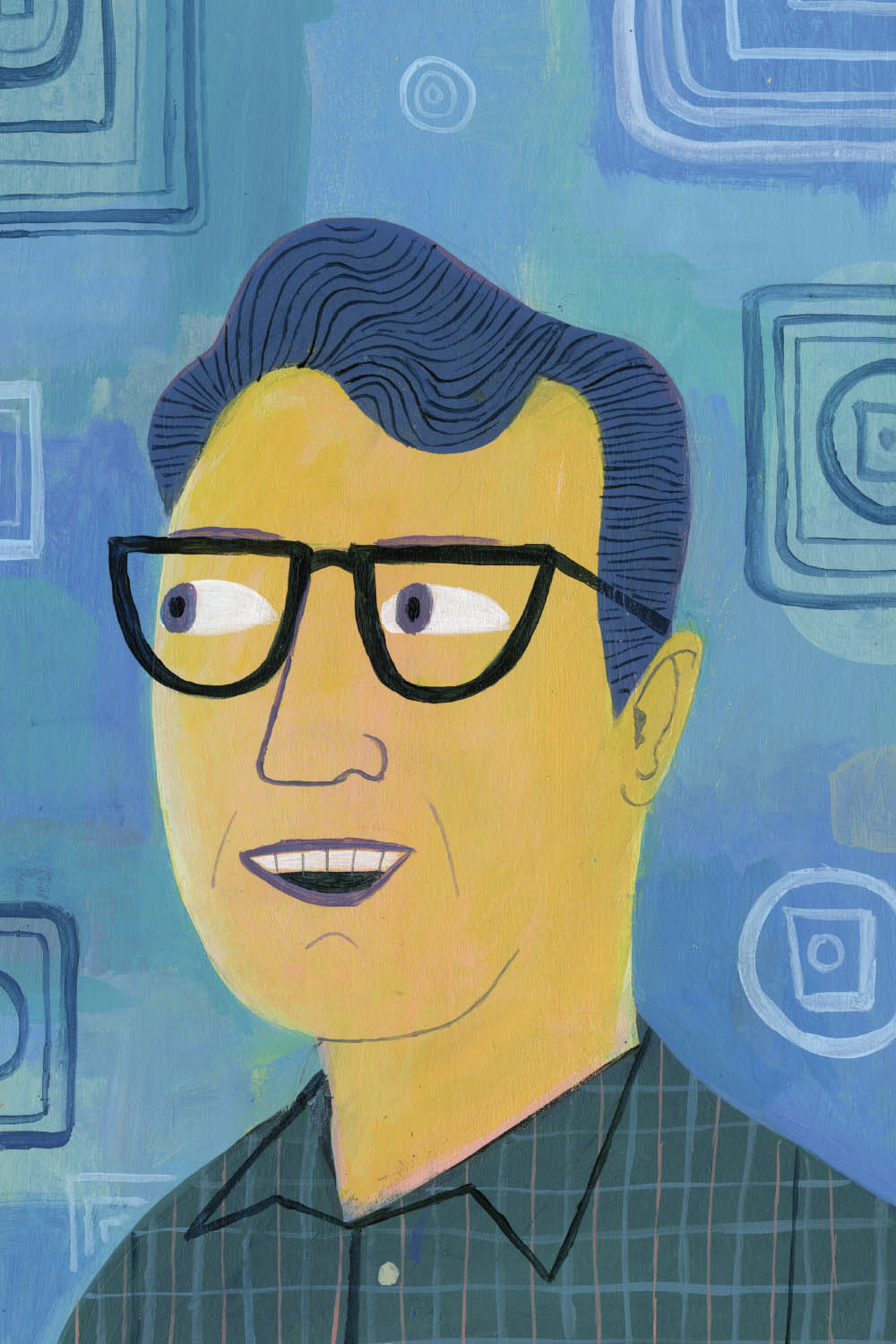 Mike Krieger
Mike Krieger  Brazil Cofounder of Instagram Fast Facts: Brazil Country: Federative Republic of Brazil Capital: Braslia Population: 209.7 million Official Language: Portuguese Currency: Real Area: 3,287,956 square miles Grad to Meet You Mike and Kevin are both Stanford University graduates. Other famous Stanford grads include Larry Page, cofounder of Google; Jawed Karim, cofounder of YouTube; and Peter Thiel, cofounder of PayPal. What if you created an app used all over the world? Imagine a billion people connecting and sharing ideas with your platform. Welcome to Instagram! The famous social media app was cofounded by Mike Krieger and Kevin Systrom. Mike was born in 1986.
Brazil Cofounder of Instagram Fast Facts: Brazil Country: Federative Republic of Brazil Capital: Braslia Population: 209.7 million Official Language: Portuguese Currency: Real Area: 3,287,956 square miles Grad to Meet You Mike and Kevin are both Stanford University graduates. Other famous Stanford grads include Larry Page, cofounder of Google; Jawed Karim, cofounder of YouTube; and Peter Thiel, cofounder of PayPal. What if you created an app used all over the world? Imagine a billion people connecting and sharing ideas with your platform. Welcome to Instagram! The famous social media app was cofounded by Mike Krieger and Kevin Systrom. Mike was born in 1986.
He grew up in So Paolo, Brazil. Even as a boy, Mike was fascinated by technology. When he was six years old, his father brought home a computer. Instantly intrigued, Mike wanted to learn everything he could about technology. When he was 18, Mike moved to California to study at Stanford University. He earned his degree in symbolic systems.
This special program mixes coding, philosophy, and psychology. Mike learned how our minds process and act on information. In essence, he learned how we use computers. Next, Mike went to work for Meebo, an instant-messaging company. As a software engineer, he helped design Meebos look and feel. Mike met Kevin Systrom, his future Instagram partner, at a coffee shop in San Francisco.
Soon, they were trading ideas. Kevin was developing an app that shared a users location and photos. He asked Mike to try it. As they exchanged ideas, Mike and Kevin became good friends. They worked so well together, Kevin asked Mike to be cofounder of his new app. Mike was still a Brazilian citizen.
He applied for a work visa, but the approval process took a long time. Mike says, I had moments where I was like, Maybe I should just tell Kevin to forget about it and find somebody else who is easier to hire. It took months, but Mike finally received his visa. By then, he and Kevin had scrapped their original idea. They decided to focus on building a photo-sharing app. They had a hunch that people wanted to send photos to more than just their friends and family.
Mike and Kevin were inspired by old Polaroid pictures. The soft colors and square shape of the photos provided the design style they were going for. Mike and Kevin went to work. They built their app in just eight weeks! Soon, Instagram was ready to launch. Within two hours of going live, Instagram had so many new users that their servers crashed. The app was an enormous hit! Today, Instagram has more than one billion active users each month.
Mike and Kevin sold Instagram to Facebook for $1 billion in 2012. Now, Instagrams worth is estimated to be 100 times that. In 2013, President Barack Obama mentioned Mike in a speech about immigrants who are successful and help the US economy. Instagram was started with the help of an immigrant who studied here and stayed here, said President Obama. Right now in one of those classrooms theres a student wrestling with how to turn their big ideainto a big business. Instagram has grown into something infinitely bigger than Mike or Kevin dreamed.
Mike still loves that people can use Instagram to travel around the world, discovering new places and making new friends. Native Tongue As a kid, Mike and his family moved frequently because of his dads work. He has lived in Portugal, Argentina, and the United States. Mike knows English, Portuguese, and countless computer languages! Quick Start When Instagram launched, 10,000 people downloaded the app within a few hours. By the end of the first week, the count was 200,000 users. In the beginning, Mike and Kevin did all the work themselves.
As time passed, they hired a few employees to help them, but they kept the team small. 






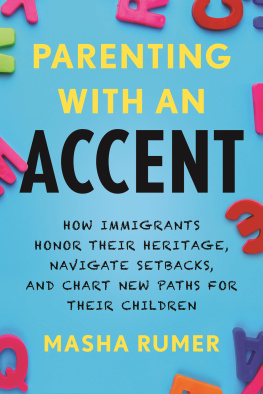

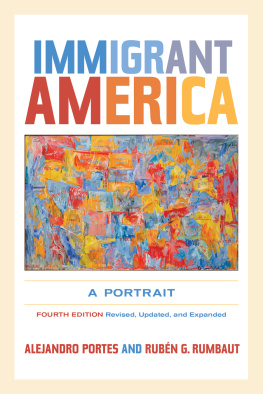

 Contents Immigrant Entrepreneurs: By the Numbers Steve Chen and Jawed Karim Rihanna Marcus Samuelsson Mariam Naficy Hamdi Ulukaya Max Levchin Shan-Lyn Ma Kids of Immigrants Koel Thomae Carlos Castro Adi Tatarko and Alon Cohen Luis von Ahn Sophia Grojsman Pierre Omidyar Francesca Cavallo and Elena Favilli Pioneering Entrepreneurs Tae Yun Kim Laura Behrens Wu Frank Gehry Ishveen Anand Claudia Mirza and Azam Mirza Jos Andrs What Kind of Entrepreneur Are You? Conclusion Sources and Read More Glossary Index About the Author and Illustrator We, the Immigrants How many times have you heard that the United States is a nation of immigrants? Many times, for sure. What we dont hear about that often are the contributions that these immigrants bring to the country, not just in terms of culture and diversity, but also in innovation, job creation, and economic growth. Immigrants are almost twice as likely to start businesses as those born in the country. Refugees have an even higher rate of entrepreneurship. Companies owned by immigrants in the United States employ 13.5 million people. In this book, you will read about 15 women and 15 men from 25 different countries.
Contents Immigrant Entrepreneurs: By the Numbers Steve Chen and Jawed Karim Rihanna Marcus Samuelsson Mariam Naficy Hamdi Ulukaya Max Levchin Shan-Lyn Ma Kids of Immigrants Koel Thomae Carlos Castro Adi Tatarko and Alon Cohen Luis von Ahn Sophia Grojsman Pierre Omidyar Francesca Cavallo and Elena Favilli Pioneering Entrepreneurs Tae Yun Kim Laura Behrens Wu Frank Gehry Ishveen Anand Claudia Mirza and Azam Mirza Jos Andrs What Kind of Entrepreneur Are You? Conclusion Sources and Read More Glossary Index About the Author and Illustrator We, the Immigrants How many times have you heard that the United States is a nation of immigrants? Many times, for sure. What we dont hear about that often are the contributions that these immigrants bring to the country, not just in terms of culture and diversity, but also in innovation, job creation, and economic growth. Immigrants are almost twice as likely to start businesses as those born in the country. Refugees have an even higher rate of entrepreneurship. Companies owned by immigrants in the United States employ 13.5 million people. In this book, you will read about 15 women and 15 men from 25 different countries.  Mike Krieger
Mike Krieger  Brazil Cofounder of Instagram Fast Facts: Brazil Country: Federative Republic of Brazil Capital: Braslia Population: 209.7 million Official Language: Portuguese Currency: Real Area: 3,287,956 square miles Grad to Meet You Mike and Kevin are both Stanford University graduates. Other famous Stanford grads include Larry Page, cofounder of Google; Jawed Karim, cofounder of YouTube; and Peter Thiel, cofounder of PayPal. What if you created an app used all over the world? Imagine a billion people connecting and sharing ideas with your platform. Welcome to Instagram! The famous social media app was cofounded by Mike Krieger and Kevin Systrom. Mike was born in 1986.
Brazil Cofounder of Instagram Fast Facts: Brazil Country: Federative Republic of Brazil Capital: Braslia Population: 209.7 million Official Language: Portuguese Currency: Real Area: 3,287,956 square miles Grad to Meet You Mike and Kevin are both Stanford University graduates. Other famous Stanford grads include Larry Page, cofounder of Google; Jawed Karim, cofounder of YouTube; and Peter Thiel, cofounder of PayPal. What if you created an app used all over the world? Imagine a billion people connecting and sharing ideas with your platform. Welcome to Instagram! The famous social media app was cofounded by Mike Krieger and Kevin Systrom. Mike was born in 1986.
